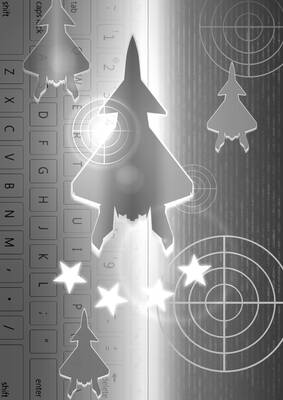The Ministry of Economic Affairs’ recent rejection of two industry consolidation proposals by local computer memory chipmakers raised the question of what role the government should play in helping the country’s struggling DRAM companies.
Given their mounting debt and the uncertain state of the sector, it has become clear that credit banks are unlikely to lend money to local DRAM companies. On the other hand, the government is also hesitant to inject funds into local DRAM companies that cannot gain access to foreign partners’ technological know-how and develop homegrown technology in Taiwan.
ProMOS faces problems repaying US$330 million in overseas convertible bonds that will mature on Feb. 14, only two weeks after the Lunar New Year holiday.
To rescue ProMOS, the Chinese-language Economic Daily News said in a front-page story published on Thursday that credit banks might pump cash into the money-losing company in the form of loans, later converting the loans into shares in the firm.
While this idea gained inspiration from the comeback of Hynix Semiconductor Inc in South Korea a few years ago, the possibility of its success in Taiwan is questionable because ProMOS in no way looks like Hynix, either in terms of production scale or technological strength.
Moreover, this loan-equity conversion will still be subject to the approval of bank shareholders and financial regulators, and that is never an easy job.
On Friday, the director-general of the Industrial Development Bureau — a government agency that is in charge of reviewing DRAM companies’ industry consolidation proposals in exchange for a government bailout — told reporters that the government did not want any local DRAM companies to fail.
The official said that to maximize the effectiveness of government aid, it would like to see local DRAM companies consolidate into one to two groups with independent technology.
Unfortunately, the proposal’s rejection suggested local DRAM companies were experiencing difficulty convincing foreign partners to help develop homegrown technology in Taiwan. The chairman of Powerchip Semiconductor Corp said bluntly that an immediate cash injection was what the companies needed most, with industry consolidation and technological independence being a long-term goal.
Clearly, local DRAM companies desperately need cash. But that money will not come from private investors as long as the companies’ losses continue to grow. Therefore, the government seems to have little option but to play the role of savior.
The problem is whether the government’s goal is to protect the industry or save individual companies. There are reasons to question whether it is a waste of taxpayers’ money if the individual companies receiving government funds are doomed to fail with or without a bailout.
If the collapse of individual companies benefits the industry as a whole, then let it be so. If the government’s bailout effort only perpetuates the sector’s long-term weakness, this effort should be stopped now.
One way or another, the government should prepare for a possible collapse and try to reduce any negative impact while beefing up investors’ confidence.

As the Chinese Communist Party (CCP) and its People’s Liberation Army (PLA) reach the point of confidence that they can start and win a war to destroy the democratic culture on Taiwan, any future decision to do so may likely be directly affected by the CCP’s ability to promote wars on the Korean Peninsula, in Europe, or, as most recently, on the Indian subcontinent. It stands to reason that the Trump Administration’s success early on May 10 to convince India and Pakistan to deescalate their four-day conventional military conflict, assessed to be close to a nuclear weapons exchange, also served to

The recent aerial clash between Pakistan and India offers a glimpse of how China is narrowing the gap in military airpower with the US. It is a warning not just for Washington, but for Taipei, too. Claims from both sides remain contested, but a broader picture is emerging among experts who track China’s air force and fighter jet development: Beijing’s defense systems are growing increasingly credible. Pakistan said its deployment of Chinese-manufactured J-10C fighters downed multiple Indian aircraft, although New Delhi denies this. There are caveats: Even if Islamabad’s claims are accurate, Beijing’s equipment does not offer a direct comparison
After India’s punitive precision strikes targeting what New Delhi called nine terrorist sites inside Pakistan, reactions poured in from governments around the world. The Ministry of Foreign Affairs (MOFA) issued a statement on May 10, opposing terrorism and expressing concern about the growing tensions between India and Pakistan. The statement noticeably expressed support for the Indian government’s right to maintain its national security and act against terrorists. The ministry said that it “works closely with democratic partners worldwide in staunch opposition to international terrorism” and expressed “firm support for all legitimate and necessary actions taken by the government of India
Minister of National Defense Wellington Koo (顧立雄) has said that the armed forces must reach a high level of combat readiness by 2027. That date was not simply picked out of a hat. It has been bandied around since 2021, and was mentioned most recently by US Senator John Cornyn during a question to US Secretary of State Marco Rubio at a US Senate Foreign Relations Committee hearing on Tuesday. It first surfaced during a hearing in the US in 2021, when then-US Navy admiral Philip Davidson, who was head of the US Indo-Pacific Command, said: “The threat [of military